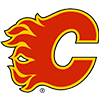Whether you're preparing for your NBA fantasy draft or fine-tuning your roster mid-season, understanding fantasy basketball rankings categories is essential.
These categories are the statistical building blocks of fantasy basketball, and they determine how well your team performs compared to league mates.
The right knowledge about fantasy basketball category rankings explained, combined with a quality fantasy basketball draft kit, can give you the edge to dominate your league.
What Are Fantasy Basketball Categories? A Beginner's Guide
Fantasy basketball rankings category rankings explained are the measurable stats that NBA players accumulate in real games. These stats — compiled by the players you draft or acquire — directly affect your fantasy results. How you rank across these categories either weekly (in head-to-head formats) or over the full season (in rotisserie formats) determines your league standing.
Once you have fantasy basketball rankings categories explained, you'll understand how to evaluate NBA projections, when to use an NBA fantasy draft cheat sheet and how to build a balanced roster that competes for a championship.
The Most Common Categories in Fantasy Basketball
Most leagues use 8-cat or 9-cat scoring systems. For fantasy basketball rankings categories explained, here's the breakdown:
- Points
- Rebounds
- Assists
- Steals
- Blocks
- 3-Pointers Made (3PM)
- Field Goal Percentage (FG%)
- Free Throw Percentage (FT%)
- Turnovers (in 9-cat leagues)
In head-to-head categories leagues, you earn a win in each category by outproducing your opponent weekly. In rotisserie leagues, stats accumulate throughout the season and points are awarded based on where you rank compared to other teams.
As an example of fantasy basketball category rankings explained, in a 10-team rotisserie league, the team with the most rebounds earns 10 points, while the team with the fewest rebounds gets 1 point.
Different formats reward different strategies, which is why using fantasy basketball rankings and customizing them to your league is critical. RotoWire's fantasy basketball draft kit offers tailored rankings for each format.
How to Use Category Rankings in Draft Strategy
Draft strategy changes depending on whether you're in a head-to-head, points or rotisserie league:
- Head-to-Head Leagues: Focus on excelling in five or six categories to secure weekly wins.
- Rotisserie Leagues: Aim for balance across all categories to avoid glaring weaknesses.
Before selecting players, consider statistical scarcity before diving into NBA fantasy ADP. For instance, rebounds can often be found later in drafts, while elite scorers and assists are usually available early.
This is where reviewing fantasy basketball auction values with a practiced eye, in addition to NBA fantasy ADP, becomes critical.
Don't forget to check NBA starting lineups, rotations and rest patterns. Understanding how players are used by their teams will directly affect their production in the categories you're targeting.
Best Practices for Drafting with Rankings
- Stay Flexible – One surprise pick or aggressive bid can change the course of your draft. Always have backup strategies.
- Don't Ignore Secondary Categories – Players who contribute in steals, blocks or percentages can swing weekly matchups or season-long standings.
- Look for Undervalued Players – Sometimes players ranked lower outperform bigger names. Category specialists can be hidden gems.
- Track Injuries Closely – The NBA injury report can help you spot value. Injured stars may slide in drafts, providing strong late-season upside.
Even players outside the All-Star spotlight can be category-winning assets. A versatile player who contributes across the board can often be more valuable than a one-dimensional scorer. Atlanta's Dyson Daniels, for example, was a better fantasy player last season than All-Star and All-NBA Second Team guard Jalen Brunson.
You need to be strong in a majority of categories — if not all of them — so having an understanding of all fantasy basketball categories will put you in a strong position to build a balanced team.
Why Category Knowledge is a Winning Edge
To maximize your draft value, for fantasy basketball rankings categories explained, you must know:
- What each category means
- Which player types excel in each stat
- How your specific league's scoring system works
Managers who subscribe to RotoWire get access to customizable rankings, advanced NBA projections, and tools like an NBA fantasy draft cheat sheet. These resources let you tailor rankings to your league's settings, giving you the insights needed to win across multiple categories.
Final Takeaway Before Subscribing to RotoWire
Mastering fantasy basketball rankings categories explained is the first step to becoming a competitive fantasy manager. By studying stats, tracking NBA starting lineups and injuries, and applying rankings strategically during your NBA fantasy draft, you'll be able to build a balanced roster capable of dominating any league format.
For the best tools — including rankings, projections and customizable cheat sheets — make sure to subscribe to RotoWire and give yourself the winning edge.
























